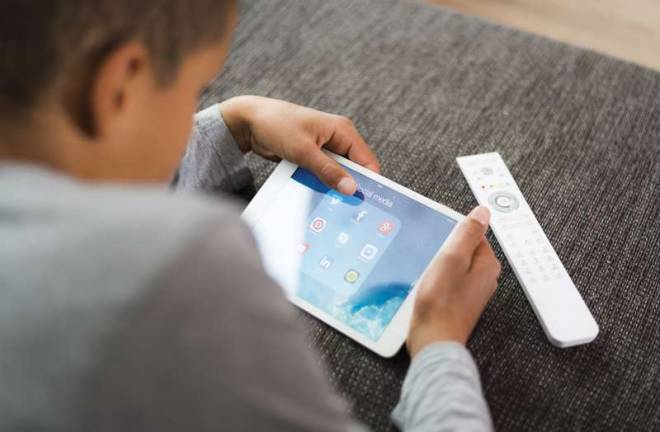A healthy use of time

The way children and adults use technology has dramatically shifted since the iPhone and iPad went on the market, said pediatrician Dr. Chris Canzonrio of Wellness Pediatrics in Sparta.
As a generation of young iPhone prodigies enter school, doctors say the need to create media guidelines is essential to children's health.
The American Academy of Pediatricians recently updated their policy on child media use to address the impact technology has on health since the dawn of the iPhone and iPad.
Dr. Jamie Goldstein of Monroe Pediatrics said the change is most likely in response to a nationwide increase in childhood obesity. As children spend more time sedentary looking at a screen, their caloric intake increases and they exercise less. “In the 'old days,' I would tell my kids to watch TV and they would watch a half-hour of Sesame Street. Then it was over. It was finite. Kids don't have that anymore,” he said.
Games like Minecraft and sites like YouTube use algorithms to draw users into an unending cycle of videos or levels. Now, children have constant access through mobile devices.
“It never ends,” Canzonrio said.
In his practice, he has seen an increase in sedentary activity, near-sightedness from staring at a screen for long periods of time and attention disorders in school-aged children.
The guidelines suggested by the American Academy of Pediatricians provide parents the tools they need to promote healthy media use that may prevent these issues.
GUIDELINES
Develop a plan: Come up with a Family Media Use plan and stick to it. American Academy of Pediatrics offers a template on their website, healthychildren.org/mediauseplan.
Exercise and Sleep: Make sure screen time does not interfere with recommended hours of sleep.
No devices at bedtime: Put devices away outside the bedroom at night and avoid screen time an hour before bed. The light disrupts sleep patterns.
Media-free homework zones: Create spaces with no devices to interfere with studies.
Spending media-free time together: Designate time without devices, such as a family dinner.
Watch, talk and develop networks with your children: co-view what your children are doing on devices, discuss online citizenship and create networks of trusted adults through social media when they develop difficulties.
Mindful-use: It can be hard for busy parents to navigate healthy guidelines, according to Dr. David L. Hill. Thinking of these guidelines in terms of mindfulness may make that easier.
WHAT KIDS ARE USING
According to the American Academy of Pediatrics Policy Report, in the past 10 years:
• The largest media continues to be TV; average is over two hours a day
• 75 percent of teenagers own a cell phone
BENEFITS TO SCHOOL-AGED CHILDREN
• Access to new ideas, current events and issues
• Increased community and civic engagement
• Greater space for academic collaboration
• New online support systems and inclusive spaces
EFFECTS OF OVERUSE
Overusing digital media can impact a child's health, school performance and safety, according to the American Academy of Pediatrics. Here's how:
Health:
• Increased risk of obesity
• May lead to internet gaming disorder, increasing a child's risk of depression. Ten percent of children in the U.S. have the disorder.
• May lead to disrupted sleep patterns
Safety:
Increased exposure to risky behavior such as drug use, sexual behaviors, self-injury and eating disorders
Greater risk of cyberbullying and predators
School Performance:
Use of media while completing homework may have a negative impact on school performance.
Canzonrio and Goldstein both said firm technology rules are essential to children's health.
“You should be flipping through your child's phone, creating a technology contract,” Goldstein said.
And both say it is always important for children to remember that it be enforced and modelled that this technology is a privilege, not a necessity.
Visit healthychildren.org to find out more or to create your family media plan.